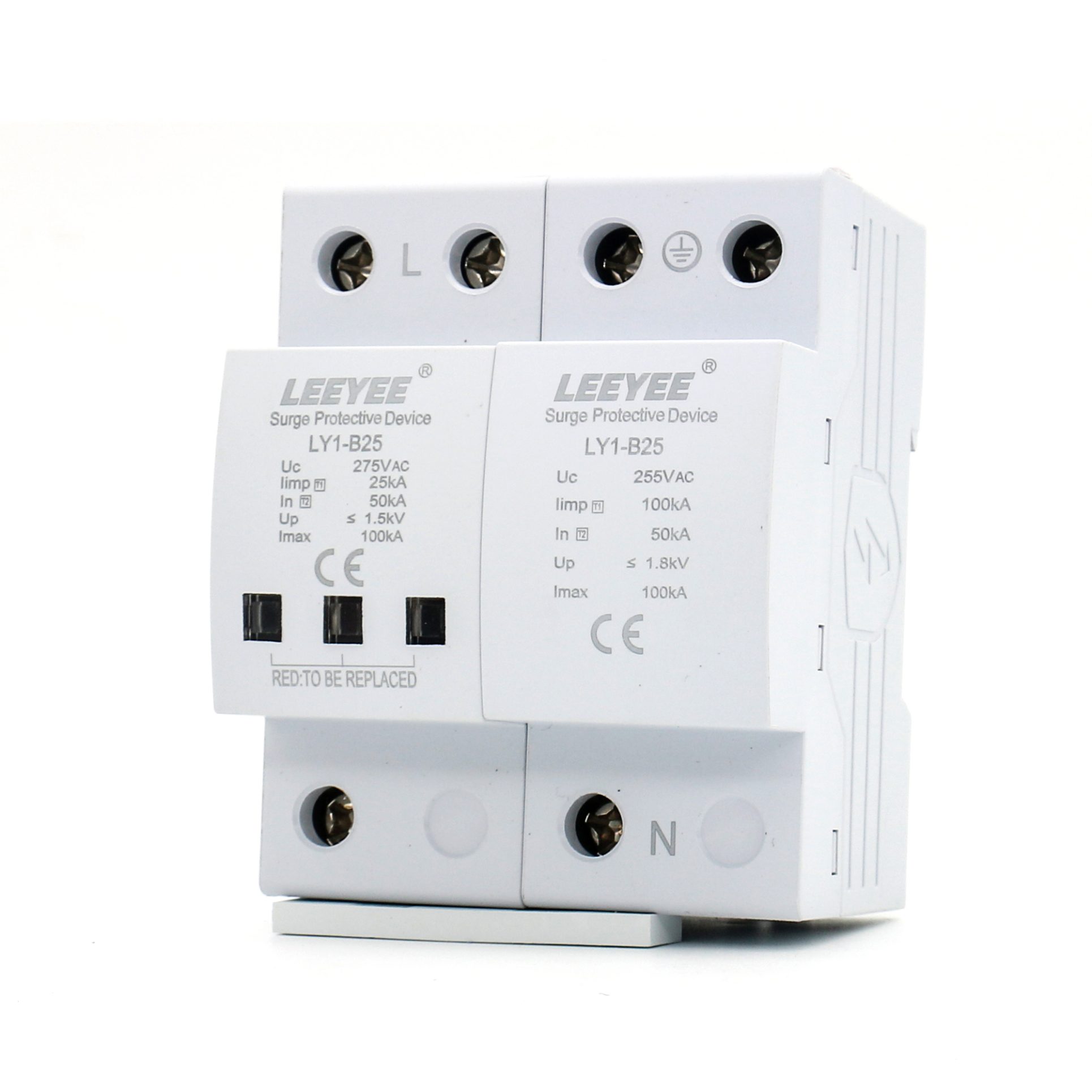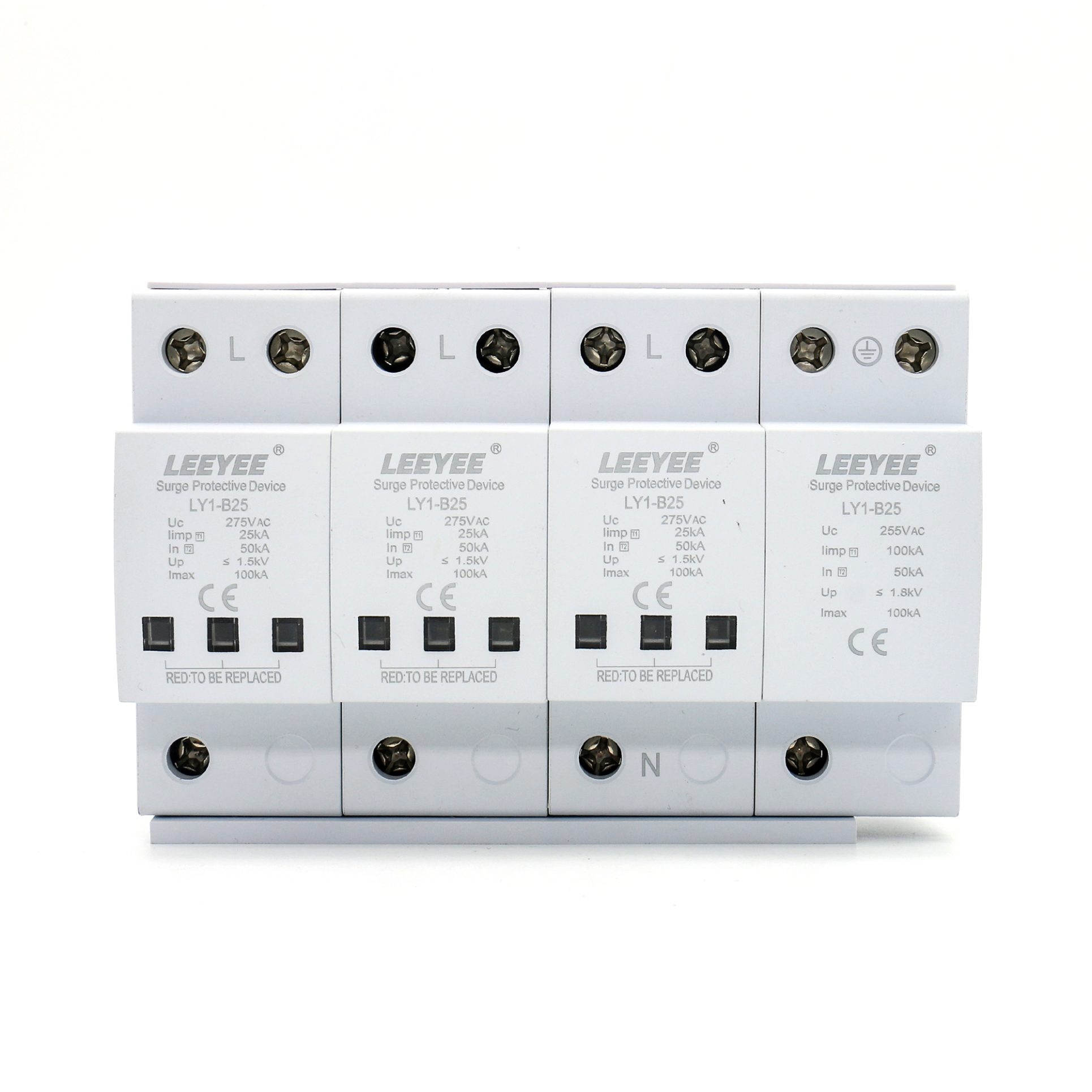Understanding AC Surge Protection Devices
Introduction
In an increasingly digital world, where technology is integral to everyday life, protecting electronic devices from electrical surges has become a necessity. An AC Surge Protection Device (SPD) is designed to shield sensitive equipment from transient overvoltages, commonly known as surges. These surges can occur due to various reasons, including lightning strikes, power outages, or even the operation of large electrical appliances. This article explores the significance of AC SPDs, their working principles, types, selection criteria, installation, maintenance, applications, and common questions.
Understanding Surge Voltage
Surge voltage refers to a sudden increase in electrical voltage that lasts for a very short period, typically milliseconds. This phenomenon can cause catastrophic damage to electronic devices, resulting in data loss, equipment failure, or even fires. Surges can originate from different sources:
- Lightning Strikes: A direct lightning strike can cause enormous surges in electrical systems, often exceeding thousands of volts.
- Switching Operations: The operation of electrical appliances, particularly those with large motors, can produce surges when they are turned on or off.
- Utility Grid Issues: Sudden changes in the utility grid, such as faults or switching events, may also lead to surges.
Understanding the sources and potential impacts of surge voltages is vital for implementing effective protection strategies.
Working Principle of AC Surge Protection Devices
AC Surge Protection Devices function by diverting excess voltage away from sensitive equipment, thereby preventing damage. The basic components of an SPD include:
- Metal Oxide Varistor (MOV): MOVs are the most common components in SPDs. They possess a high resistance at normal voltage levels but become conductive when the voltage exceeds a certain threshold, effectively shunting the excess voltage to the ground.
- Gas Discharge Tube (GDT): GDTs operate similarly to MOVs but are often used in conjunction with them. They ionize when a surge occurs, providing a low-resistance path to ground, thus protecting the connected equipment.
- Transient Voltage Suppressor (TVS): TVS devices react to voltage spikes in nanoseconds, clamping the voltage to a safe level.
When a surge occurs, the SPD detects the abnormal voltage and activates its protective components to either absorb or divert the excess energy, ensuring that only safe voltage levels reach the connected devices.
Types of AC Surge Protection Devices
SPDs are categorized based on their application and installation points:
1. Type 1 – Primary Surge Protectors
Type 1 SPDs are installed at the service entrance of a building. They provide the first line of defense against surges from external sources, such as lightning. These devices are designed to handle high-energy surges and are usually connected to the electrical service panel.
2. Type 2 – Secondary Surge Protectors
Type 2 SPDs are installed downstream from Type 1 devices, typically at the distribution panel. They offer additional protection for branch circuits and are effective against surges that may come from both external sources and internal switching operations.
3. Type 3 – Point-of-Use Surge Protectors
Type 3 SPDs are used at the equipment level. They are often found in power strips or built into devices. These protect sensitive electronic equipment from any residual surges that may have passed through Type 1 and Type 2 devices.
Selecting the Right Surge Protection Device
Choosing the right SPD requires consideration of several factors:
1. Voltage Rating
Ensure that the SPD’s voltage rating matches or exceeds the system voltage at the installation point (e.g., 120V or 240V).
2. Surge Current Rating
The surge current rating indicates the maximum surge current a device can handle. This is often measured in kiloamperes (kA). Look for SPDs with a high surge current rating for better protection.
3. Response Time
The response time of an SPD is crucial in determining how quickly it can react to surges. A faster response time minimizes the risk of damage to connected equipment.
4. Installation Location
Consider where the SPD will be installed (service entrance, distribution panel, or point-of-use) and choose the appropriate type accordingly.
5. Certifications
Ensure that the SPD meets relevant industry standards and certifications. Look for devices certified by organizations such as Underwriters Laboratories (UL) or the International Electrotechnical Commission (IEC).
Installation and Maintenance
Installation Guidelines
Proper installation of an SPD is critical to its performance:
- Location: Install Type 1 SPDs as close to the service entrance as possible. Type 2 devices should be placed at the main distribution panel, while Type 3 devices are best at the point of use.
- Grounding: Ensure that the SPD is properly grounded to allow for effective shunting of excess voltage.
- Wiring: Follow the manufacturer’s installation instructions, paying attention to wiring configurations and connections.
Maintenance Considerations
Regular maintenance is essential for ensuring the continued effectiveness of SPDs:
- Visual Inspections: Periodically inspect SPDs for any visible signs of damage, such as discoloration or burn marks.
- Testing: Some SPDs come with diagnostic indicators to show operational status. If the indicator shows that the device has failed, replace it immediately.
- Replacement: SPDs have a limited lifespan, especially after significant surge events. Replace them regularly or after any major surge incident.
Applications of AC Surge Protection Devices
AC Surge Protection Devices find applications across various sectors, including:
1. Residential Use
In homes, SPDs protect appliances, computers, and home entertainment systems from surges caused by lightning or other disturbances. Whole-house surge protection systems can be installed at the service entrance for comprehensive protection.
2. Commercial Use
In commercial buildings, SPDs safeguard critical equipment such as servers, telecommunication systems, and point-of-sale devices. They are essential in protecting the integrity of business operations and preventing data loss.
3. Industrial Use
Industrial facilities often have large machinery and automation systems that are vulnerable to surges. Installing robust SPDs helps protect these investments and ensures operational continuity.
4. Healthcare Facilities
In hospitals and healthcare settings, SPDs protect sensitive medical equipment, ensuring patient safety and data integrity.
Common Questions About AC Surge Protection Devices
1. Can a Surge Protector Protect All My Devices?
While surge protectors provide a significant level of protection, it is essential to understand that they may not guarantee complete safety against all types of surges. It is advisable to use a combination of different types of SPDs for comprehensive protection.
2. How Can I Tell If My Surge Protector Has Failed?
Most modern SPDs have visual indicators that show their operational status. If the indicator shows red or if the device is discolored or damaged, it may need replacement.
3. Do I Need a Surge Protector for Every Device?
While it is not necessary to have a separate surge protector for every device, it is wise to use point-of-use SPDs for critical equipment, particularly in areas prone to surges.
4. How Often Should I Replace My Surge Protector?
There is no fixed lifespan for surge protectors, but as a general rule, consider replacing them every 3 to 5 years, or immediately after a significant surge event.
Conclusion
AC Surge Protection Devices are essential for safeguarding electronic equipment from the damaging effects of surge voltages. By understanding their function, types, and installation requirements, individuals and organizations can make informed decisions to protect their valuable assets. As technology continues to evolve, the importance of SPDs in maintaining the integrity and safety of electrical systems will only grow. Investing in reliable surge protection is not just a precaution; it is a necessity in today’s digital age.
If you have any questions or need further assistance regarding surge protection solutions, please feel free to contact us.
References and Further Reading
For those interested in delving deeper into the topic of surge protection, consider exploring the following resources:
- “Surge Protection for Power Systems” – IEEE Standards
- “The Importance of Surge Protection for Electrical Systems” – National Electrical Manufacturers Association (NEMA)
- Manufacturer’s manuals and guidelines for specific surge protection devices.
Frequently Asked Questions (FAQ)
Q1: What is a Type 2 SPD used for?
Type 2 SPDs are installed at the distribution panel to protect branch circuits and connected devices from internal and external surges.
Q2: What’s the difference between Type 1 and Type 2 SPD?
Type 1 SPDs are placed at the service entrance for lightning and large surges. Type 2 SPDs are installed downstream at the distribution board for additional protection.
Q3: Do I need both Type 1 and Type 2 SPD?
Yes. Type 1 provides the first defense against external surges, while Type 2 adds secondary protection for sensitive equipment. Using both ensures comprehensive safety.


